Venezuela: All you need to know about the crisis in seven charts
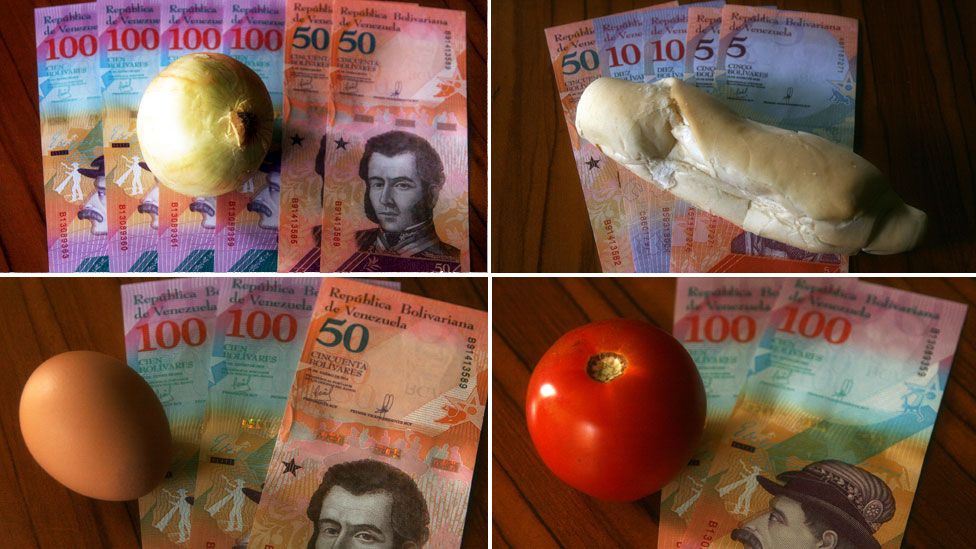 GETTY IMAGES
GETTY IMAGES
Growing discontent in Venezuela, fuelled by hyperinflation, power cuts and food and medicine shortages, has led to a political crisis.
Opposition leader Juan Guaidó has declared himself interim president following large protests, galvanising opponents of current socialist President Nicolás Maduro.
Some 26 people were reportedly killed in demonstrations last week and the UN has warned that the situation could spiral out of control.
More than three million Venezuelans have fled their country over recent years, blaming hunger, lack of medical care, rising unemployment and violent crime.
Here are seven charts that try to explain what's going on.
1. Inflation is ridiculous
The biggest problem facing Venezuelans in their day-to-day lives is hyperinflation.
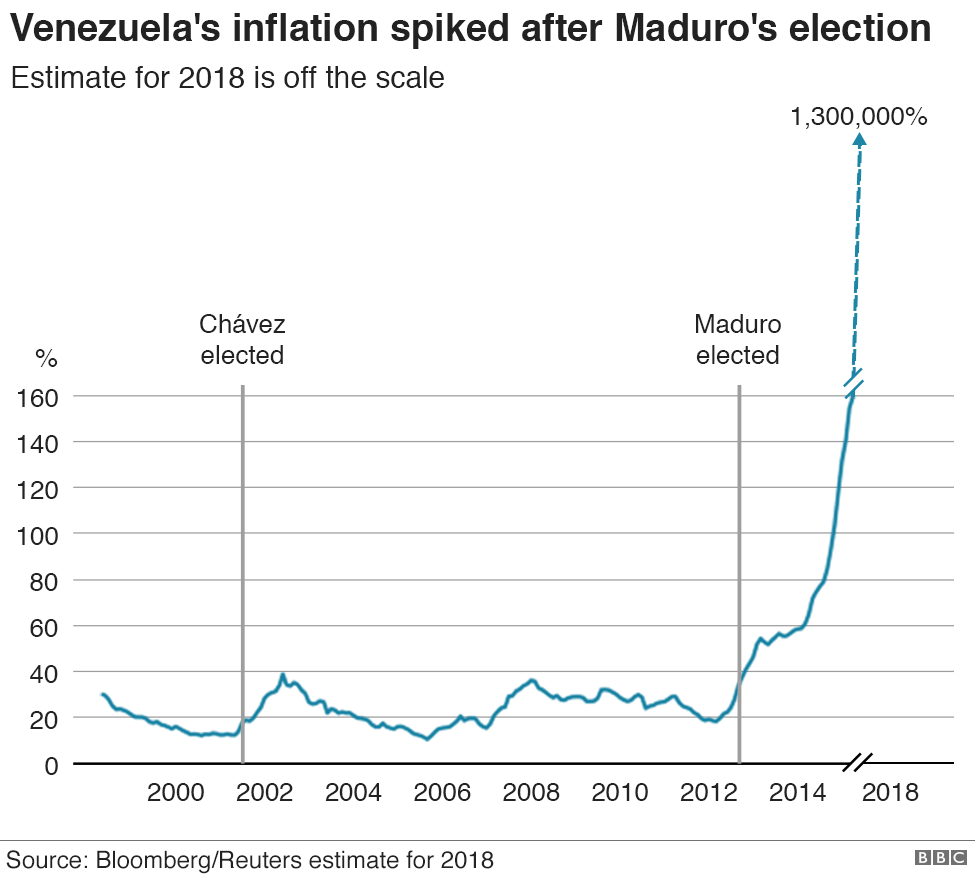
According to a study by the opposition-controlled National Assembly, the annual inflation rate reached 1,300,000% in the 12 months to November 2018.
By the end of last year, prices were doubling every 19 days on average. This has left many Venezuelans struggling to afford basic items such as food and toiletries.
The number of bolivars - the national currency - needed to buy US$1 has also rocketed.
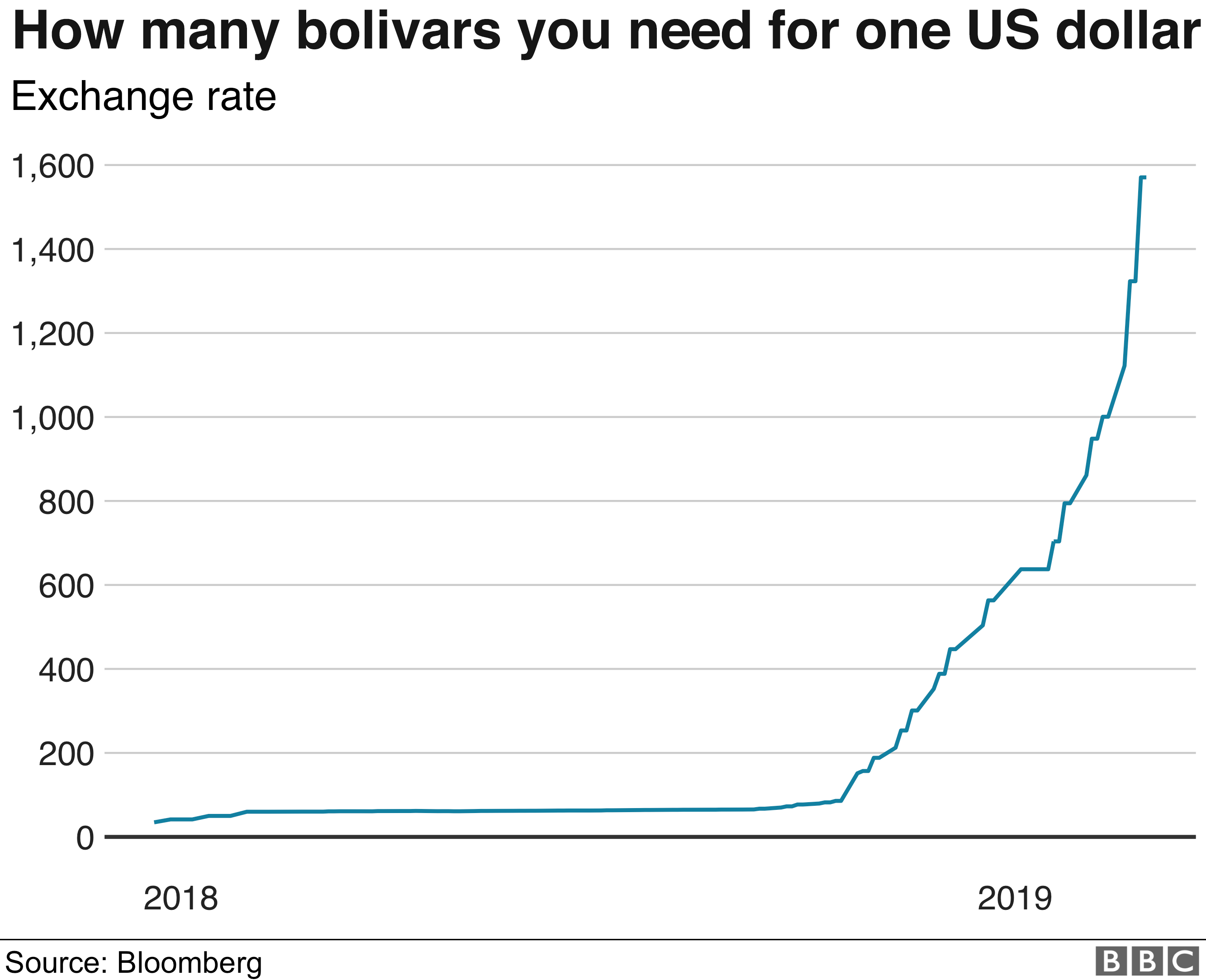

2. GDP is falling
Venezuela once boasted Latin America's richest economy - boosted by the biggest oil reserves on the planet.
But under former president Hugo Chávez, who died in 2013, and current President Maduro, corruption, mismanagement and high levels of debt have seen the country's economy collapse.
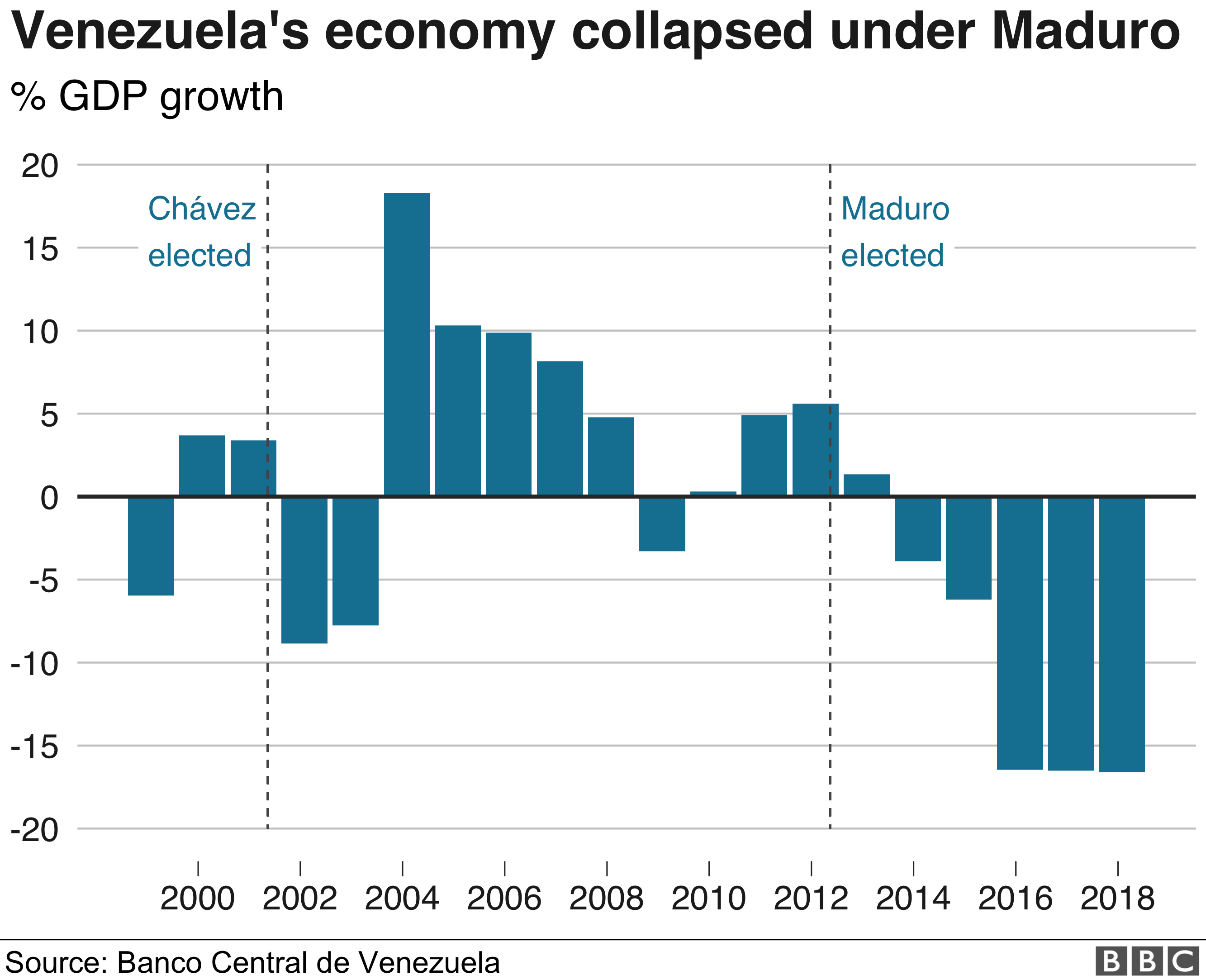
President Chávez took advantage of the oil boom in the 2000s to borrow heavily and government spending soared.
Then, during President Maduro's first term in office, the Venezuelan economy went into freefall.
Many blame him and his socialist government for worsening the country's decline.
Plummeting oil prices in 2016 compounded the oil-dependant country's crisis.

3. People don't have enough food...
Venezuelans are going hungry.
Of those questioned for the country's annual living conditions survey (Encovi 2017), eight out of 10 said they were eating less because they did not have enough food at home.
Six out of 10 said they had gone to bed hungry because they did not have the money to buy food.
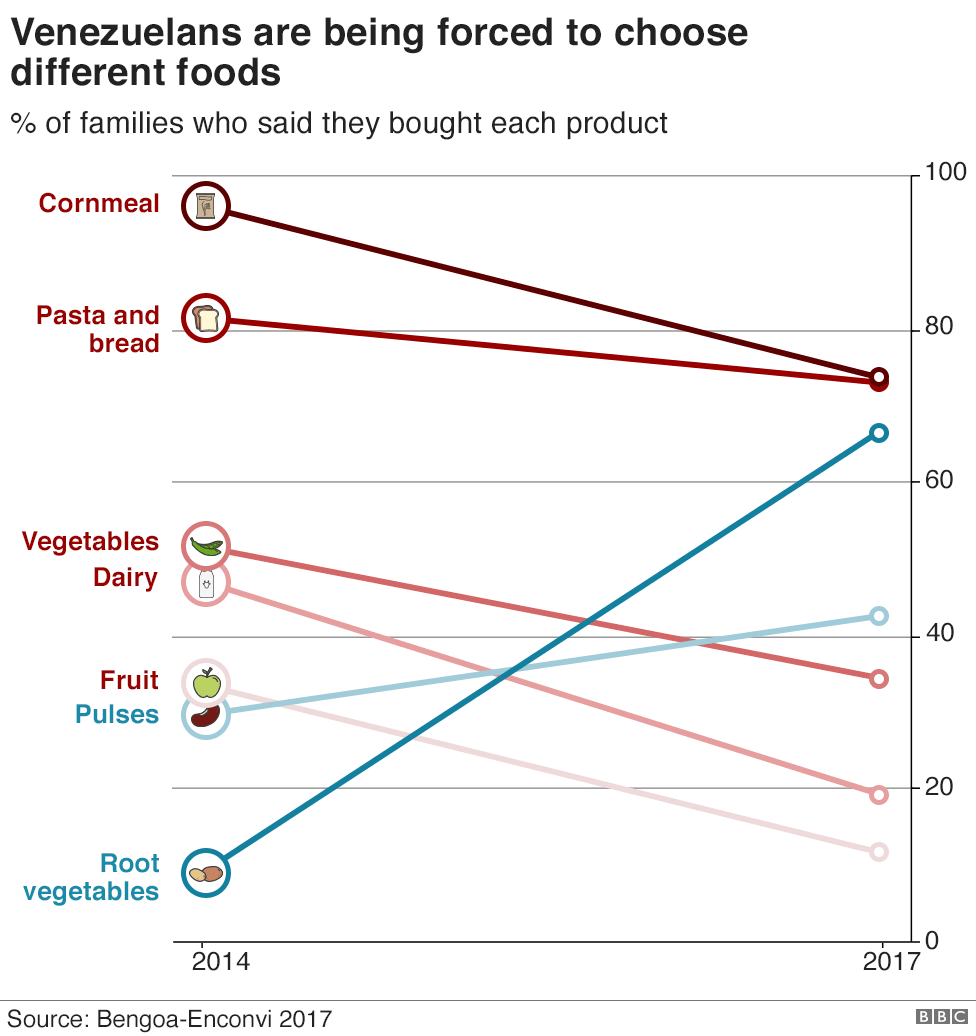

And this is taking its toll on the nation's health.
Most people (64.3%) said they had lost weight in 2017 - 11.4kg on average, with the poorest losing most.
Other key findings of the study included:
- Traditional meals were decreasing in size and quality
- Nine out of 10 people couldn't afford their daily food
- 8.2 million had two meals a day or fewer
- Sources of iron, vitamins and other nutrients were lacking from people's diet
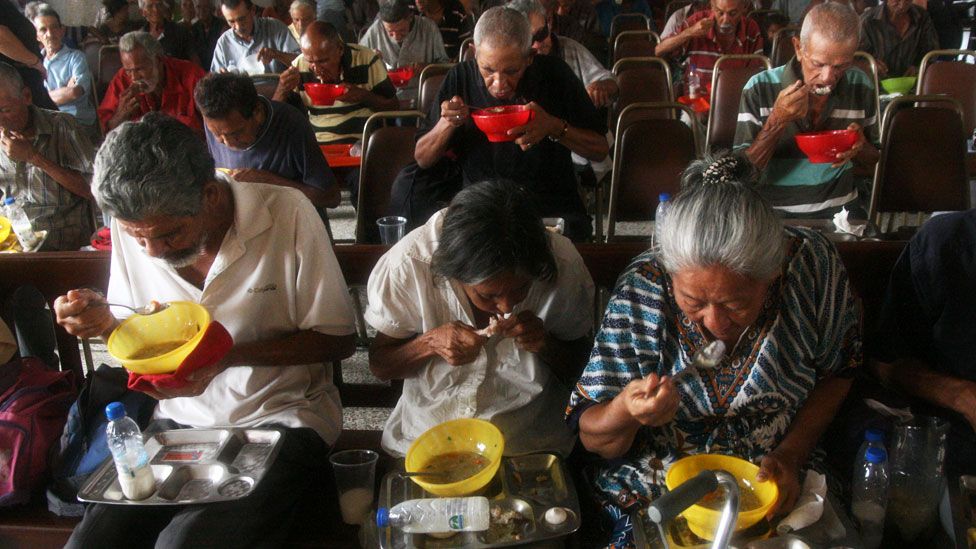 GETTY IMAGES
GETTY IMAGES
As a result, Venezuelans are turning to forgotten vegetables and foodstuffs that were once considered a "poor people's food".
The yuca - or cassava - root vegetable, for example, is versatile, cheap and a traditional substitute for potatoes.
It can be boiled or fried - which fast food chain McDonald's used to its advantage in 2015, changing their Venezuelan menu from potato fries to yuca fries.

4. ...they also don't have enough medicine
Venezuela has suffered a huge rise in the number of malaria cases in recent years - in stark contrast to neighbouring countries in Latin America, where numbers are falling.
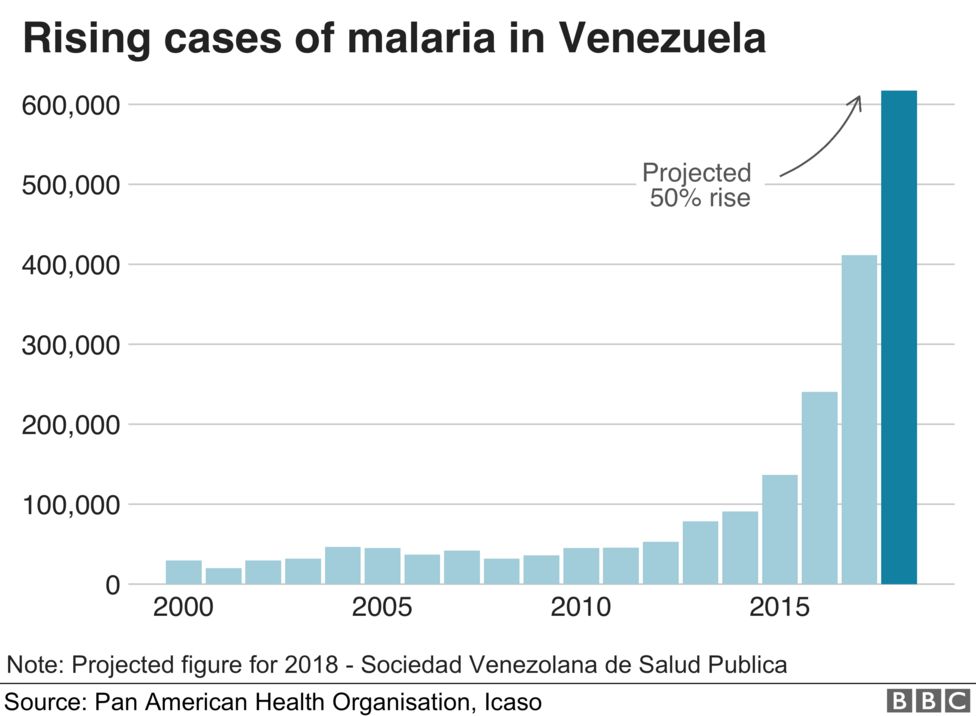
Having been the first country certified to have eliminated the disease in 1961, Venezuela now has cases in at least 10 out of 24 states.
Canadian NGO Icaso has said leaked government reports show the spread includes the hard-to-eradicate form of malaria - plasmodium vivax.
The Venezuelan Health Observatory has reported widespread shortages of antimalarial drugs - for all strains.
Jose Felix Oletta, infectious disease specialist and former health minister, says projections for 2018 suggest an increase of 50% in the number of cases on 2017.
"At this pace, we will have more than one million cases in one year," he told Icaso. "These were numbers Venezuela had at the beginning of the 20th Century. Malaria is out of control in Venezuela."

5. Oil output is on the decline
Venezuela holds the world's largest supply of crude oil, and petroleum products make up the vast majority of the country's exports.
Production held virtually steady from 2002 - just before the national strike - to 2008, when global oil prices peaked. Figures from the Organization of the Petroleum Exporting Countries (Opec) show the country earned bout $60bn from oil that year.
But the collapse in oil prices towards the end of 2014 - a year after Mr Chávez died from cancer - decimated the country's already-struggling oil-dependant economy.

The country hit crisis levels the following year, with GDP shrinking by almost 6% and inflation soaring.
Oil output has been declining since.

6. Many Venezuelans are leaving
Three million Venezuelans have left their home country since 2014, according to the UN.
The majority of those leaving have crossed into neighbouring Colombia, some then move on to Ecuador, Peru and Chile. Others have gone south to Brazil.


Vice-President Delcy Rodríguez has disputed the UN's figures, saying they are inflated by "enemy countries" trying to justify a military intervention.

7. Countries are split over who to support
The US, more than a dozen Latin American countries, and Canada have already backed Mr Guaidó - leader of Venezuela's elected National Congress - undermining President Maduro, who began a second term in office just a fortnight ago.
On Saturday, Spain, Germany, France and the UK said they would officially support Mr Guaidó if new elections were not called within eight days.
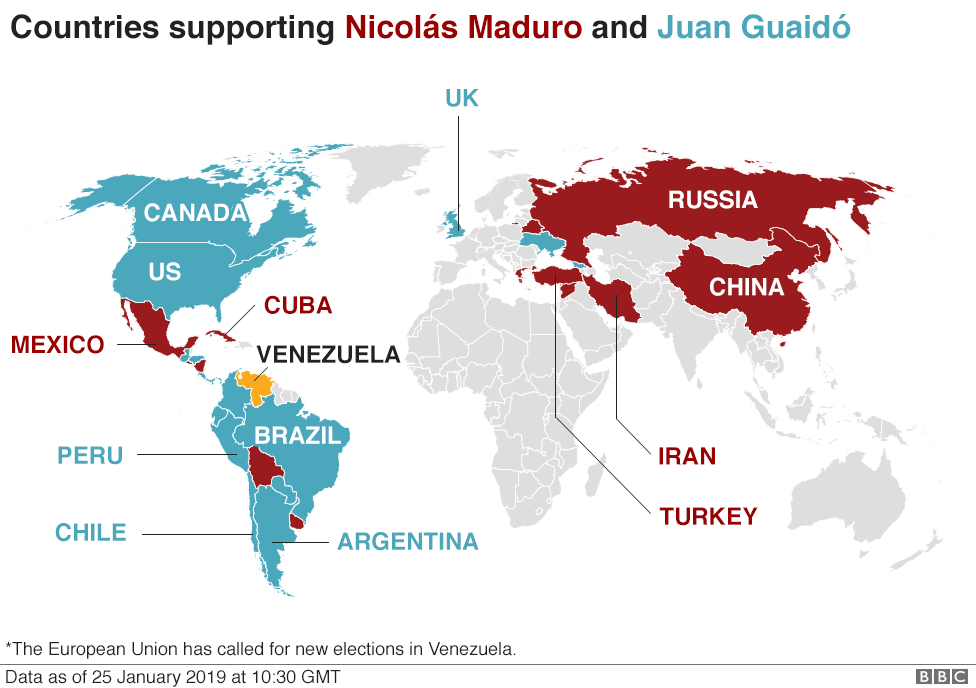
But Russia has condemned foreign support for Mr Guaidó, saying it violates international law and is a "direct path to bloodshed". China, Mexico and Turkey also back Mr Maduro.
By Dominic Bailey, David Brown, Daniele Palumbo, Lucy Rodgers, Olesya Volkova, Sean Wilmott.

No comments:
Post a Comment